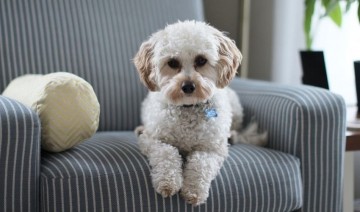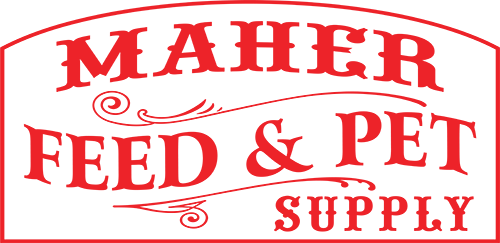How to Housetrain an Adult Dog

Housetraining a puppy can be a challenge, but what about an adult dog? No matter what the age of your canine companion, there are ways to housetrain an adult dog and help improve their potty habits.
Why an Older Dog May Need Housetraining
An adult dog may need housetraining for many reasons. If the dog has been adopted, it may never have been housetrained previously, or it may have spent a long period in a kennel or shelter and lost its housetraining habits. Dogs that have always lived outdoors may not have been formally housetrained, or older dogs may need refresher training as they develop health conditions that make previous housetraining less suitable. If you move to a new home, your dog may need help shifting its housetraining routine to a new location, or a dog that suffers from anxiety or other behavioral complications might need housetraining reminders.
Whatever the reason, it is always possible to housetrain an older dog. While some dogs may need just basic reminders about the proper potty time, other dogs may need several weeks of diligent training to establish a comfortable routine.
Tips to Housetrain an Adult Dog
Housetraining an adult dog isn’t altogether different from housetraining a puppy. While an older dog may be more set in its ways, it also has a larger bladder and better muscle control to hold its elimination until the proper time. To help your adult dog be successful with housetraining…
- Establish Regular Potty Times – Any adult dog will need to eliminate urine and/or feces several times throughout the day. Bathroom breaks first thing in the morning, shortly after each meal, right before bedtime, and at least 1-2 other times during the day are best. Keep this routine even on weekends or holidays to help your dog always know when it is time to potty.
- Watch for Behavioral Clues – Note how the dog behaves before it eliminates, and use those clues to judge how often it needs a potty break. Most dogs will start to get anxious if they feel an elimination urge, and may circle, sniff, or otherwise be looking for an acceptable spot to urinate or defecate. The dog may also whine or scratch at the door to indicate its need.
- Provide a Potty Place – If you prefer your dog to do its business in a designated location, be sure the animal clearly knows where. Choose a spot away from a garden, flowerbeds, or children’s play areas. The potty spot should be large enough for the dog to sniff, turn, and find just the right place to feel comfortable. If desired, you could outline the space with a border so everyone in the family knows where to take the dog for a potty break.
- Be Patient – It may take several minutes of sniffing and seeking for your dog to find the spot it prefers to squat or raise its leg. Be patient and allow your dog to feel at ease, without scolding or hurrying the dog along. Rushing a potty break can lead to anxiety and fear and may cause the dog to try and hide its behavior, which could disrupt housetraining and create more accidents.
- Use a Command – As your dog starts to eliminate, use a command like “go potty!” or “do your business!” as a verbal clue. Speak loud and clearly enough so the dog can hear, but do not yell or startle your dog, which could interrupt its potty break. As the dog becomes housetrained, this command can then be used to remind it to potty when let out at the appropriate times.
- Offer a Reward – Immediately after your dog eliminates in the potty area or on command, offer a small treat or other reward such as praise or a friendly pat. This will reinforce the behavior in a positive way so the dog understands it has done well and will strive to repeat the behavior.
- Use a Crate – If the adult dog has trouble with housetraining, confine the dog to a crate before potty times. Dogs will be unwilling to eliminate in a small, confined area where its bedding and water bowl are kept, and this will help the dog develop more regular bathroom habits. As soon as the dog is removed from the crate, take it to the potty spot for proper training.
Accidents Will Happen
Even adult dogs will occasionally have bathroom accidents. If these accidents are frequent or become a sudden problem, consult your veterinarian, because it could be a sign of health problems, a change in dietary needs, anxiety, or other concerns. These issues will need to be resolved before the dog can be effectively housetrained.
When an accident happens, clean it up quickly, and take any rags or paper towels to the designated potty spot to help encourage your dog to use the proper space. Then use an enzymatic cleaner, vinegar, or ammonia to remove scent markers and odor from the accident area that might encourage the dog to reuse the same spot.
If you happen to catch your dog while eliminating in an improper area, clap your hands loudly or use a sharp “STOP!” command to interrupt the potty if possible, then immediately take your dog to its potty spot. If it finishes the deed in the correct area, offer the appropriate praise. Do not, however, punish your dog for an accident, as the dog will not understand and any harsh behavior, including chasing, yelling, or rubbing its nose in the mess, will only create fear and anxiety, which can lead to even worse bathroom habits.
Always be patient with your dog while housetraining, whether the dog is a young puppy, a mature adult, or an aging senior. Gentle but firm guidance can help your dog develop the best potty habits, and soon it will adapt to housetraining with ease.
Special Offers
Coupons and other special offers. Click the Button below to view all of our offers!
View all OffersWe are constantly adding new specials to our site. Be sure to check back often!

Comments